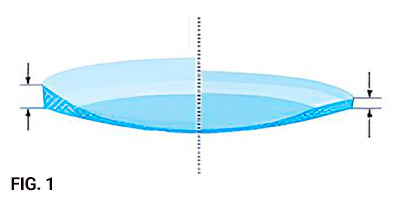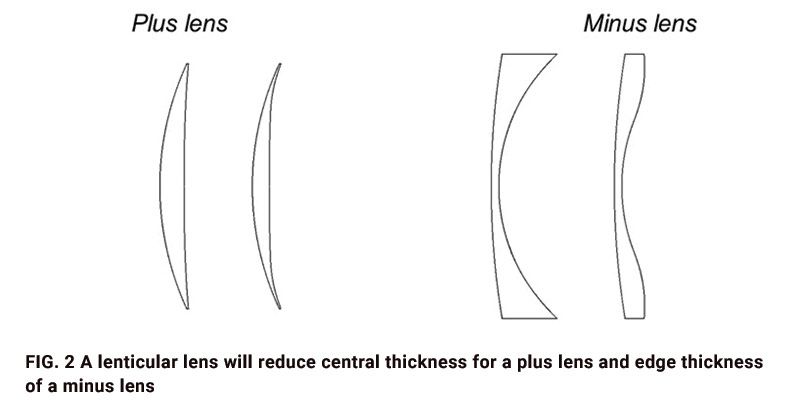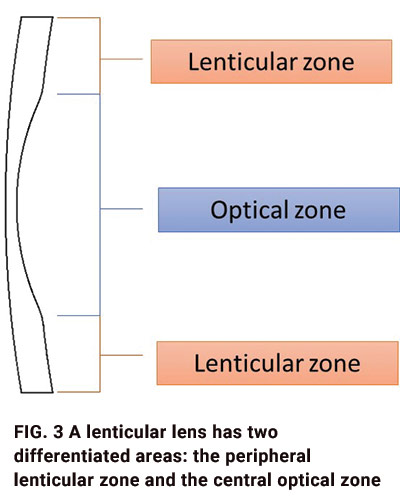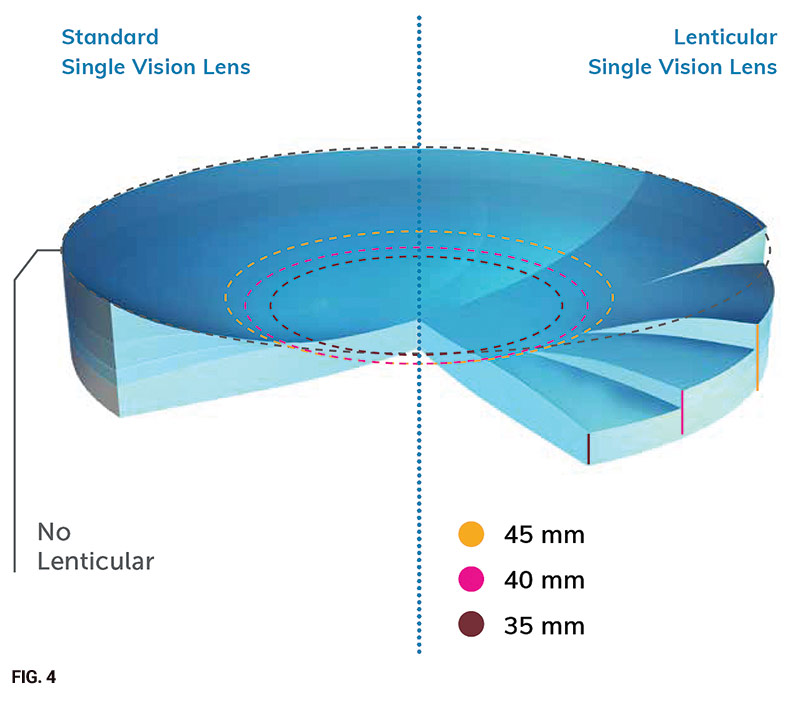Sponsored by IOT
By Deborah Kotob, ABOM
When we think of thinner and lighter lenses, the first thing to come to mind is hi-index material, but IOT lenticular lens design provides the ECP with another option that can be applied to any lens material or lens style, i.e., single vision, bifocal or PAL. And lenticular lenses are ideal for high wrap sport frames.
For most of us who have been around for a bit, the term “lenticular” conjures images of the old aphakic lenticular lenses often described as looking like a fried egg with a bulging spherical aperture surrounded by a flat carrier lens. These old-style lenticular lenses were most often used for aphakics, who did not have their crystalline lens replaced with an intraocular lens (IOL) implant, after cataract surgery. Now as then, lenticular lens design benefit high ametropes (plus or minus). But with the new free-form lenticular designs, wrap sports frames can be made thinner and lighter, aesthetically more attractive and with better lens retention in high base curve frames. With IOT’s lenticularization technology, any lens can be lenticularized, whether single vision, lined bifocal or progressive addition lenses, available in any IOT design. There are no limitations in the base curve or material.

The purpose of a lenticular lens is to reduce thickness without affecting the most usable area of the lens. As a result, lenticular lenses are thinner and lighter, and can be used for a broader range of Rxs for a given lens blank and final cribbing size than regular lenses (Fig. 1).
An optimal optical region is defined around the fitting cross. Outside this region, the free-form lens calculation blends the surface curvature toward the edge to reduce the thickness of the final lens. As a result, minus Rx lenses are thinner at the edge, and plus Rx lenses are thinner at the center.

IOT lenticular lenses are always thinner and cosmetically more appealing for high prescriptions and high wrap (Fig. 2). For plus power lenses, the center thickness reduction can be as much as 20 and weight can be reduced as much as 30 percent. Minus lenses can be approximately 25 percent thinner and lighter regular lenses, and edge thickness (ET) can reduce dramatically with some labs reducing, for example, ET from 14 mm to 7 mm. Furthermore, Rx ranges can be expanded by as much as two diopters, and materials include polycarbonate and 1.67.

Types of lenticularization include:
PLUS LENTICULAR: This type of lenticularization is recommended for clear lenses. This method blends the surface smoothly from the edge of the optical zone to the cribbing edge of the final lens. The lenticular area can be noticed as a different power in the lens that is not usable by the wearer. Depending on how smooth or abrupt the blending of the surface curvature is, the lens thickness will be less or more reduced. The maximum curvature blending will depend on the surfacing equipment capabilities.
PARALLEL LENTICULAR: This type of lenticularization is perfect for a more aesthetic look in sport and wrap frames. It’s called parallel lenticular due to the way the back surface blends in the lenticular area. The curvature changes in a small blending zone (normally 5 mm in length) to achieve the curvature and tilt of the front surface, which is maintained to the cribbing edge of the final lens.
THE OPTICAL ZONE: Flexible processes are in place to define the diameter of the optical zone. It can be done automatically based on different job parameters, set up as a specific diameter size (35 mm, 40 mm, 45 mm, 50 mm, etc.) or manually specified during the job entry on a job to job basis. The shape of the optical zone is not limited to circular, it can be elliptical or even adjusted to the shape of the frame.
The Optical Zone is the central area of the lens (Fig. 4). This area has optical and geometric characteristics that are the same in normal and lenticular lenses. The Lenticular Zone is the peripheral areas outside the optical zone. This is where the lens surface blends to improve thickness. The larger the optical zone, the wider the visual field of view, about the smaller the lens thickness reduction. Balancing the optics with the cosmetics should always err on the side of better visual clarity.

NOTE: An optical zone smaller than 40 mm may significantly limit the visual field width.
Lenticularization has come a long way thanks to IOT lenticularization. Your high myopes and hyperopes will thank you, especially when you are able to give them a sport wrap frame in their high prescription that is free of distortion in their optical zone.












